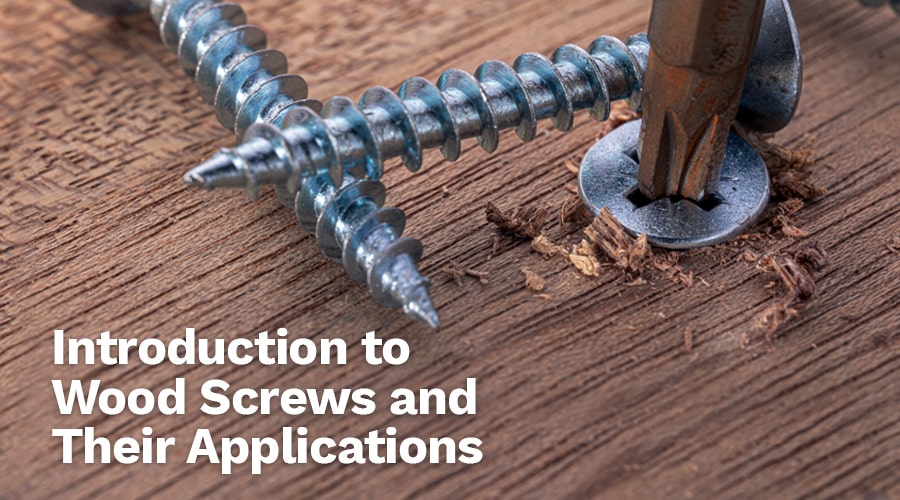


Wood screws are instrumental in a diverse range of woodworking projects. From deck construction, and modular kitchen works to door and hinges construction, wood screws are essential to all. Their diverse variety enables them to be used in a range of applications. But, not all wood screws are created equal, they come in different lengths, sizes, shapes, tips & designs that cater to different use cases.
Before we jump in into the types of prominent wood screws, let us first understand the construction of wood screws and how it impacts their applications.
It is the key to ensuring robust & long-lasting screws Different materials and finishes are available for varied needs. Stainless steel screws come at the pole position due to their corrosion resistance, sturdy build and ability to withstand heavy loads without breaking.
The head is one of the principal parameters when it comes to screwing drivability. A good quality head makes the fixation process easier and offers the joint excellent toughness & durability. We often encounter 2 head types majorly in our day-to-day use namely pan head & flat head.
The shaft often works as the spine of the screw, from where maximum strength arrives. Certain screws that don’t have threads resemble nails, and that long unthreaded portion will be a long shank. Shanks serve the dual purpose of withstanding heavy stress & providing length to the screw to ascertain desired toughness. They also allow the usage of wood screws for repair purposes.
Ever wondered what the spiral part of the screws is, they are threads that provide great drive-through to the screws. They are either close as in the full thread, or coarse thread or have a certain distance between thread and head as in the case of partial thread. Full thread ones are mainly used for hardwood applications and coarse thread is utilised for softwood or light wooden works. Partial thread ones are used in the making of carriages, patios and fences.
Last but not least is the tip of the screw. Which may be self-drilling or self-tapping. To know the details, suggest you to visit, this great writeup on key differences between self-tapping and self-drilling screws. Long story short, self-drilling screws have the ability to drill a pilot hole themselves while the self-tapping ones lack them.
As the name suggests, these screws have a flat head, that provides greater torque for screw drivability. In other words, they have a flat top surface and a tapered point. They are primarily used to attach or affix hardware to wood, such as doors, hinges and brackets. The flat head also allows easy joining and is less prone to splitting and cracking.
The head of these screws resembles the shape of a pan, they have a rounded top surface with a flat underside. They are used in the joining objects where the screw would remain concealed such as decorative and light furniture projects. They are an excellent choice when working with softwoods.
Drywall screws are the first choice for drywall installations where greater strength and torque are required. They have a sharp, pointed tip that makes it easy to drive the screw and a coarse thread that provides a firm grip on the joint. Whenever there is a need to join aluminium to wood, drywall screws are preferred. They come in a variety of lengths, common ones ranging from 1-¼ inches to 2 inches.
The four-point head of a Phillips wood screw is its signature. It provides better grip and tightness to the screw. It also enables it to be easily machine-driven. It is the leading choice for applications that involve light furniture making and require flexibility.
Getting their name from the making of carriages and docks in the early 18th century, these screws are one of the strongest of the lot. They don’t have threads on their upper shank area and it imparts the required toughness. They are ideally used with nuts and washers and are able to bind nearly all types of wood to metals.
We majorly have covered almost all types of wood screws that are pivotal to construction projects and are widely used across industries for several decades. Each of them has its unique set of applications and depending on the project at hand, a particular type can be chosen. While the parameters may be different for each type, one common use is there, they fasten or affix wood to different objects and metals unlike any other.
For the best quality wooden screws, give screws from us at LP Screw a try, India’s leading stainless steel wood screw manufacturer. The quality, performance, the durability of each piece would speak for the stringent process it has gone through. When it comes to the best, LP simply beats the rest.